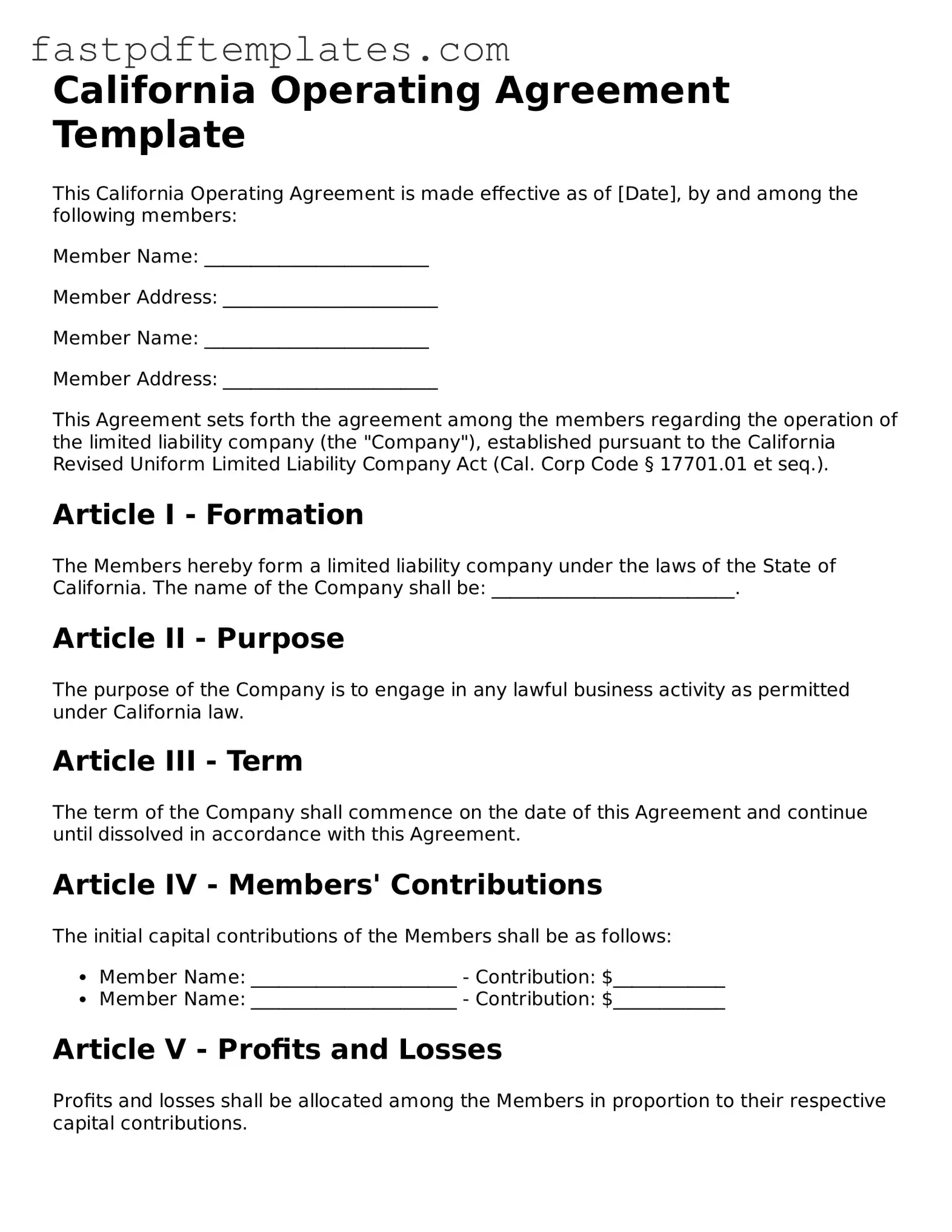California Operating Agreement Template
This California Operating Agreement is made effective as of [Date], by and among the following members:
Member Name: ________________________
Member Address: _______________________
Member Name: ________________________
Member Address: _______________________
This Agreement sets forth the agreement among the members regarding the operation of the limited liability company (the "Company"), established pursuant to the California Revised Uniform Limited Liability Company Act (Cal. Corp Code § 17701.01 et seq.).
Article I - Formation
The Members hereby form a limited liability company under the laws of the State of California. The name of the Company shall be: __________________________.
Article II - Purpose
The purpose of the Company is to engage in any lawful business activity as permitted under California law.
Article III - Term
The term of the Company shall commence on the date of this Agreement and continue until dissolved in accordance with this Agreement.
Article IV - Members' Contributions
The initial capital contributions of the Members shall be as follows:
- Member Name: ______________________ - Contribution: $____________
- Member Name: ______________________ - Contribution: $____________
Article V - Profits and Losses
Profits and losses shall be allocated among the Members in proportion to their respective capital contributions.
Article VI - Management
The Company shall be managed by its Members. Decisions shall be made by a majority of the Members unless otherwise specified in this Agreement.
Article VII - Meetings
Annual meetings of Members shall be held at a time and place designated by the Members. Special meetings may be called by any Member.
Article VIII - Amendments
This Agreement may be amended only by a written agreement signed by all Members.
Article IX - Dissolution
The Company may be dissolved by a unanimous vote of the Members or as otherwise provided by California law.
IN WITNESS WHEREOF
The parties have executed this Operating Agreement as of the date first above written.
Member Signature: ________________________ Date: _______________
Member Signature: ________________________ Date: _______________
Please keep a signed copy of this Agreement in your records.
